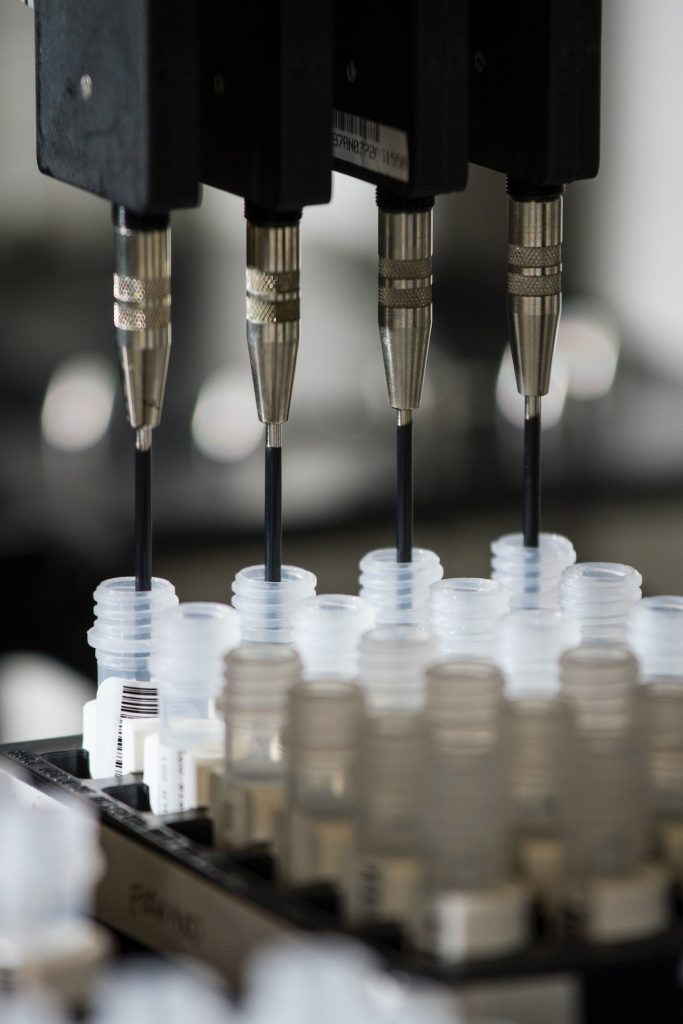Welcome to the world of platelet production and the fascinating role of the thrombopoietin receptor. Platelets, small cell fragments essential for blood clotting, play a crucial role in maintaining hemostasis and preventing excessive bleeding. Understanding the regulation of platelet production is of utmost importance for managing various hematological disorders and improving patient outcomes.
The thrombopoietin receptor, a key player in platelet production, acts as a signaling hub, orchestrating multiple pathways that drive the differentiation and proliferation of megakaryocytes, the precursors of platelets. By activating various intracellular signaling cascades, the thrombopoietin receptor ensures the efficient production of platelets in response to the body’s demands.
This article will explore the signaling pathways activated by the thrombopoietin receptor and shed light on the intricate regulatory mechanisms that govern platelet production. Additionally, we will discuss the therapeutic potential of targeting the thrombopoietin receptor and highlight future directions in this exciting area of research. Get ready to embark on a journey into the fascinating world of the thrombopoietin receptor and platelet production.
The Role of Thrombopoietin in Platelet Production
Thrombopoietin plays a vital role in platelet production, orchestrating a complex symphony of cellular pathways. It is a cytokine hormone that binds to the thrombopoietin receptor, which is expressed on the surface of hematopoietic stem cells and megakaryocytes. The binding of thrombopoietin to its receptor activates intracellular signaling pathways, leading to the proliferation and differentiation of megakaryocytes. These megakaryocytes undergo a process called endomitosis, where their DNA replicates multiple times without cell division, resulting in the formation of large, polyploid cells. These cells then undergo cytoplasmic maturation, forming platelet precursor fragments called proplatelets. Finally, the proplatelets are released into the bloodstream, where they undergo further maturation to become functional platelets. Understanding the role of thrombopoietin in platelet development has important clinical implications, as it has led to the development of thrombopoietin receptor agonists that can stimulate platelet production in patients with thrombocytopenia.
Understanding the Thrombopoietin Receptor
Unveiling the secrets of this key player in platelet formation is like embarking on a thrilling adventure into the world of blood clotting. The thrombopoietin receptor, also known as MPL, plays a crucial role in hematopoiesis, the process of blood cell formation. Understanding the mechanism of thrombopoietin receptor activation is essential to comprehending its impact on platelet production. Upon binding with thrombopoietin, the receptor undergoes dimerization and activation of its intracellular signaling pathways. This activation leads to the proliferation and differentiation of megakaryocytes, the precursor cells of platelets. The thrombopoietin receptor is not only involved in platelet production but also contributes to the maintenance of hematopoietic stem cells and the regulation of other blood cell lineages. Further research into the thrombopoietin receptor’s intricate workings will provide valuable insights into its potential as a therapeutic target for hematological disorders.
Signaling Pathways Activated by the Thrombopoietin Receptor
Delving into the intricate world of blood clotting, we uncover the remarkable signaling pathways ignited by the mighty thrombopoietin receptor. One of the key pathways activated by the thrombopoietin receptor is the JAK STAT pathway. Upon binding of thrombopoietin to its receptor, the receptor undergoes a conformational change, leading to the activation of Janus kinases (JAKs). These JAKs phosphorylate and activate the receptor, creating docking sites for signal transducers and activators of transcription (STATs). The activated STATs then translocate to the nucleus, where they regulate the expression of target genes involved in platelet production and differentiation. Another crucial aspect of thrombopoietin receptor signaling is MPL receptor activation. This activation triggers downstream events that promote the survival, proliferation, and differentiation of megakaryocyte progenitors, ultimately leading to platelet production. Understanding these signaling pathways provides valuable insights into the regulation of platelet production and holds promise for the development of novel therapeutic strategies for thrombocytopenic disorders.
Regulation of Platelet Production by the Thrombopoietin Receptor
A key aspect of the regulation of platelet production involves the activation of the JAK STAT pathway by the thrombopoietin receptor, leading to the expression of target genes involved in the differentiation and proliferation of megakaryocyte progenitors. Thrombopoietin (TPO) is a cytokine that binds to its receptor, c-Mpl, on the surface of megakaryocyte progenitors. This binding activates the JAK STAT pathway, which triggers a cascade of events resulting in the production of platelets. The JAK STAT pathway is crucial for regulating the balance between platelet production and megakaryocyte differentiation. Dysregulation of this pathway can lead to disorders such as thrombocytosis or thrombocytopenia. Understanding the regulatory mechanisms of platelet production by the thrombopoietin receptor has important clinical applications. Targeting this pathway can potentially be used to treat thrombocytopenia and other platelet-related disorders.
Therapeutic Targeting of the Thrombopoietin Receptor
You can target the thrombopoietin receptor therapeutically to potentially treat disorders associated with platelet imbalance and enhance clinical outcomes. The thrombopoietin receptor, also known as MPL, plays a crucial role in platelet production and regulation. By modulating its activity, researchers have identified therapeutic implications and clinical applications that could revolutionize the treatment of platelet-related disorders. One such approach is the use of thrombopoietin receptor agonists, which stimulate the receptor and promote platelet production. These agonists have shown promising results in clinical trials, leading to increased platelet counts and improved clinical outcomes in patients with thrombocytopenia, immune thrombocytopenic purpura, and chemotherapy-induced thrombocytopenia. Additionally, targeting the thrombopoietin receptor can help optimize platelet production in patients undergoing stem cell transplantation or those requiring platelet transfusions. This exciting avenue of research holds great potential for the development of novel therapies that can effectively address platelet imbalances and improve patient outcomes.
Future Directions in Thrombopoietin Receptor Research
Further investigation into the thrombopoietin receptor’s role in platelet regulation could lead to groundbreaking advancements in the treatment of platelet-related disorders. Understanding the intricate pathways and mechanisms involved in platelet production is crucial for the development of potential inhibitors that can modulate platelet levels in patients. By targeting the thrombopoietin receptor, researchers can potentially regulate platelet production and address conditions such as thrombocytopenia and myeloproliferative disorders. Clinical applications of these potential inhibitors could involve the treatment of patients undergoing chemotherapy or bone marrow transplants, as well as those with immune-mediated thrombocytopenia. Additionally, further research into the thrombopoietin receptor could shed light on novel therapeutic interventions for other platelet-related disorders, including thrombotic diseases. By exploring this avenue, we have the potential to revolutionize the way we treat platelet-related disorders, improving patient outcomes and quality of life.
Conclusion
In conclusion, the thrombopoietin receptor plays a crucial role in platelet production. By understanding the receptor and the signaling pathways it activates, researchers can gain insights into the regulation of platelet production. The therapeutic targeting of the thrombopoietin receptor holds promise for the treatment of platelet-related disorders. As research in this field continues to advance, future directions will focus on further elucidating the intricate mechanisms of the thrombopoietin receptor and exploring its potential for therapeutic interventions.


